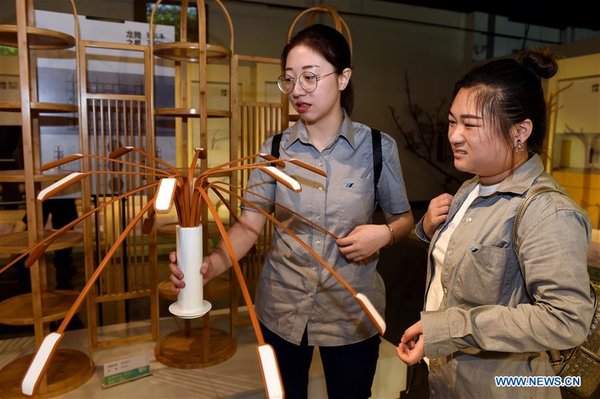This article is not an entertainment or a musical feature to one of the country’s most beloved entertainers. This is actually a homage to none other than “the” bamboo.
The emergence of “bamboo culture” has been noticeable in recent years. From its traditional use as a decorative element or furniture, it is now being used for just about anything – a speaker, bike, straw, a toothbrush, and even motorbike! All these innovative products banner the same claim: The use of bamboo making them more sustainable.

Since bamboo is believed to be an underrated commodity compared to coffee, cacao, and rubber, the Philippine Bamboo Foundation has been focusing on promoting its mainstream uses – most of which are not even known by the general public. People will be surprised by the versatilely of bamboo and its myriad of uses.
“Among the new products that we have introduced include bamboo beer and bamboo tea, both made from the plant’s extracts”
Edgardo C. Manda, member of Philippine Bamboo Industry Development Council and President of Philippine Bamboo Foundation (PBF)
Innovative products that are still being developed include barbecue sticks, toothpicks, and even coffee stirrers. these environmnent-friendly items can even be exported, which means locals in rural areas can have a sustainable source of livelihood if they opt to produce them”.
PBF also hopes that bamboo can be used more often by those in the field of home building and interior design. The group also highlighted how bamboo is used by many small-scale enterprises for local handicrafts. Among the recent and more unique initiatives of PBF included how they challenged woodcarvers from Ifugao to try their hands on bamboo.
“The project turned out to be an eye-opener not only for woodcarvers but also for art collectors. With the scarcity of wood, the use of bamboo can bean alternative medium when it comes to woodcarving” said Manda.
Manda reiterated the group’s “Bamboo Advocacy” that talks about the importance of Bamboo in terms of livelihood components, as ac commodities and even for environmental purposes. “We have been collaborative with various government agencies to include bamboo in there programs and trainings,” Manda said.
The programs of PBF are geared on a focused objective of educating farmers on the scientific way of conserving and expanding hectarage on the country’s natural bamboo forests. With PBF’s collaboration with TESDA, the foundation has developed Training Standards for Bamboo propagation, nursery and plantation management.
Aside from its industrial use, bamboo has also been proven to be a very valuable plant in mitigating climate change. During the UN Climate Talks held in Poland last 2018, a number of experts reiterated the importance and possible role of bamboo in helping curb the effects of climate change. In a research done by the Nature Conservancy and the International Bamboo and Rattan Organisation (IN-BAR), experts said that bamboo can deliver over 35 percent of cost-effective carbon dioxide mitigation that is needed by the year 2030.

Bamboo is proven quite effective in helping maintain an ideal climate or surrounding in continents where it thrives like Asia, Africa, and South America. This is because bamboo can store more carbon compared to certain species of trees and provide a year-round, climate-resilient form of income for millions of people around the world. This makes bamboo a very plausible tool for countries that wish to have a sustainable, green development plan, especially in developing countries. In China, bamboo is a billion-dollar industry, making the country the leader when it comes to bamboo innovation.

Bamboo Forest in Pampanga
In Lubao Pampanga, the same concept is being applied in a special bamboo park that is being established in the province of Pampanga. A truly notable effort from the local government, the five-hectare bamboo forest called the Lubao Bamboo Nature Park located in Brgy. Catalina, is a way to help the municipality revive its natural resources. The bamboo were planted seven years ago and it took three years for the bamboo to grow. It was then rehabilitated by the PBF so the whole reserve can be transformed into a bamboo park.
To date, there are 42 species of bamboo that grow in the nature reserve. Some of these species are being grown in a nursery as engineered bamboo to be used by Pampanga’s flourishing furniture industry.
As bamboo has been proven to grow abundantly and is easy to propagate, this fast-growing grass plant is a very viable solution to climate change, environmental degradation, and in so many ways, even poverty. We can all agree that this amazing and versatile plant is not just useful. But it has proven its value not only for beautification but most importantly for the survival of our planet
With additional reports from Mae Lorraine R. Lorenzo, Manila Bulletin
Source Images:
https://miro.medium.com/max/3200/1*8C40nF4NTgSYNZOAzpOi-g.jpeg
https://www.bambooimport.com/image/catalog/blog/over-bamboe/1000-producten/bamboo-products-collage.jpg
http://m.womenofchina.cn/res/womenofchina/1806/18069877.jpg
https://live.staticflickr.com/4165/34341520122_078bedd65a_b.jpg






